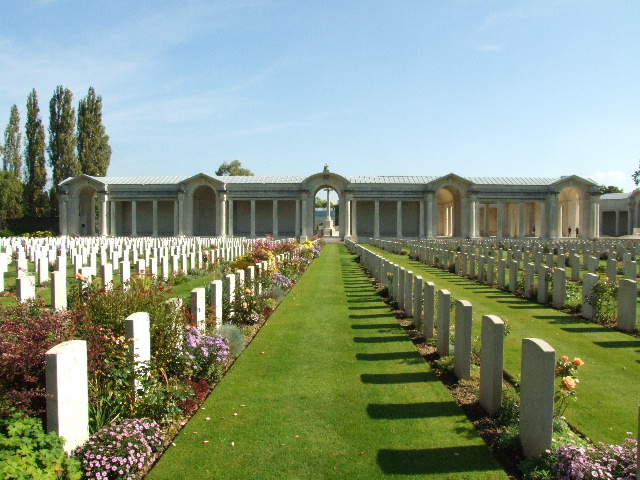Name
Joseph Handscombe
Conflict
First World War
Date of Death / Age
23/04/1917
20
Rank, Service Number & Service Details
Private
23086
Bedfordshire Regiment
4th Bn.
Awards: Service Medals/Honour Awards
Not Yet Researched
Cemetery/Memorial: Name/Reference/Country
ARRAS MEMORIAL
Bay 5.
France
Headstone Inscription
NA
UK & Other Memorials
Pirton Village War Memorial,
St Mary’s Shrine, Pirton,
Methodist Chapel Plaque, Pirton,
Pirton School Memorial
Biography
Joseph Handscombe was the younger brother of Frank who was killed in action on July 11th 1916. They shared Regiments, but were not in the same Battalion; Frank was in the 6th and Joseph in the 4th. They were the sons of George and Martha Handscombe (née Dawson). George was married twice and the offspring from his first marriage and his marriage to Martha are detailed in the chapter on Frank. All, parents and children, were born in Pirton.
Like a number of Pirton families the George and Martha saw a large number of their children go to war. In their case it was four. Frank and Joseph both died and their brothers Charles and Hedley survived. Joseph was born on June 16th 1896. He, like all their children, went to Pirton School and again, like most of the children or at least the boys, went to work on the local farms when he left school. In Joseph’s case he was just fourteen; this is confirmed in the 1911 census.
After his brother went to war, Joseph took on his brother’s position as secretary of the Wesleyan Sunday School until he too joined up to serve his ‘King and Country’. The Parish Magazine records that as being some time between October 21st 1915 and March 2nd 1916. The Hertfordshire Express published in May, after his death, confirms that he had been in France for ten months. So, after a period of training, he would have arrived there some time around July 1916. In fact the 4th Battalion landed in France on July 25th and he probably travelled there then with Sidney Baines, also from Pirton and in the same battalion. Their experience, up to the date that Sidney died, would have been much the same(*1). Luckily they missed the first days of the Somme and the tragic and massive losses. In fact they were brought to the Front to help replace them. They suffered the same shelling, fought in the trenches and nervously waited to go ‘over the top’ in the major attack on November 13th. Sidney died on that day, but Joseph survived and carried on.
The survivors of the 4th Battalion withdrew to Hamel to be resupplied and then moved back to the reserve trenches in the Beaucourt Sector. On the 14th they formed carrying parties and supplied bombs and sandbags etc. up to the front line and were still in great danger. They moved to bivouacs and huts on the 16th before carrying out the sad, painful and very dangerous task of clearing the dead from the battlefield. At least in this case the bodies had only lain there for a few days; in other locations they lay for months before they could be collected, identified if possible and then buried.
On the 18th they moved to Longuevillette and were driven there by motor omnibuses. Although the roads were probably in poor condition, they may have managed to get some rest on the journey. At least they were not on foot and that was fortunate because the next day they started on a 55 mile route march over four days moving from Longuevillette to Nouvion-en-Ponthieu.
Unfortunately the December 1916 and January 1917 months are missing from the diary, but February 1917 saw more marching. This time to Forceville and then Englebelmer, where they were billeted before moving into the reserves trenches at Beaumont-Hamel on the 6th. These were the old 1st and 2nd German lines. They moved forward and held the front line in support of the 189th Infantry Brigade who were in action. On the 11th they were ordered to ‘push forward their line of posts’, which they did, although they were held up by barbed wire and heavy machine gun fire. Between the 6th and 16th they had 68 men killed, 90 wounded, 3 were missing and 45 missing believed killed. They were in and out of the front line until the 24th when they were ordered to advance the line of posts from the Sunken Trench. This they did with 1 man killed and 10 wounded.
March was quieter with lots of marching, training and a little well earned rest. In April they moved to Arras and on the 14th took over part of the front line. The next day 2 officers were killed and 58 officers and other ranks were wounded. On the 23rd at 4:45am they attacked and captured the village of Gavrelle, but were heavily shelled during the day and then the Germans counter attacked. Afterwards 2 more officers were dead and 13 wounded. The war diary records 260 casualties amongst the other ranks, it does not say how many died, but Joseph Handscombe was one of them. He was the second Pirton man to die in the area. George Trussell of the 6th Royal West Surrey Regiment had been killed thirteen days earlier.
Like George and three other Pirton men in this area, Joseph’s body was never found and his name appears as one of 34,717 names of the missing on the Arras Memorial which stands with imposing and quiet dignity alongside one of the main routes into Arras.
(*1) More details appear in the biography for Sidney Baines.
Additional Information
Text from the book: The Pride of Pirton
Acknowledgments
The Pride of Pirton book – www.pirton.org.uk/prideofpirton Chris Ryan / Tony French / Jonty Wild



